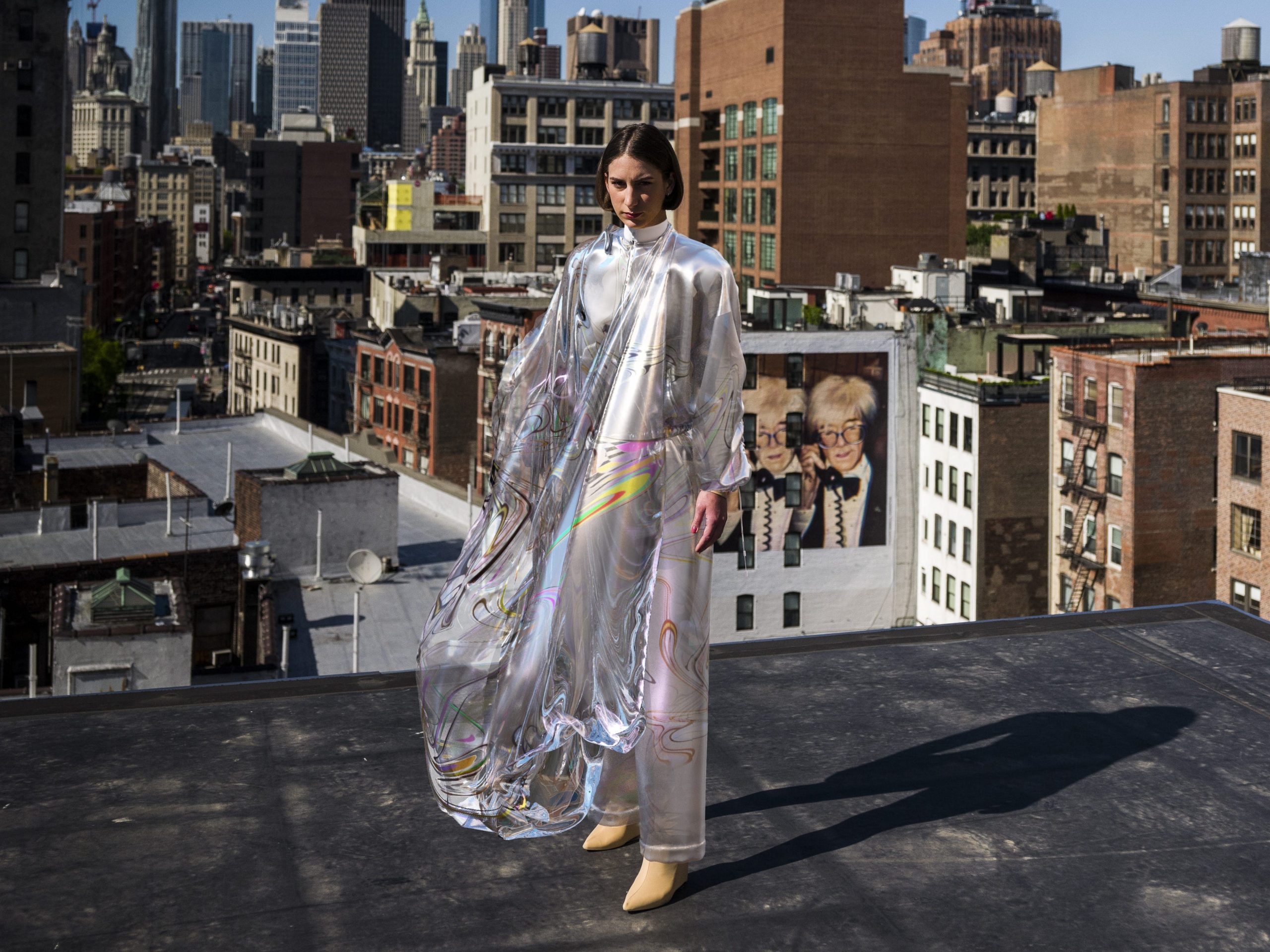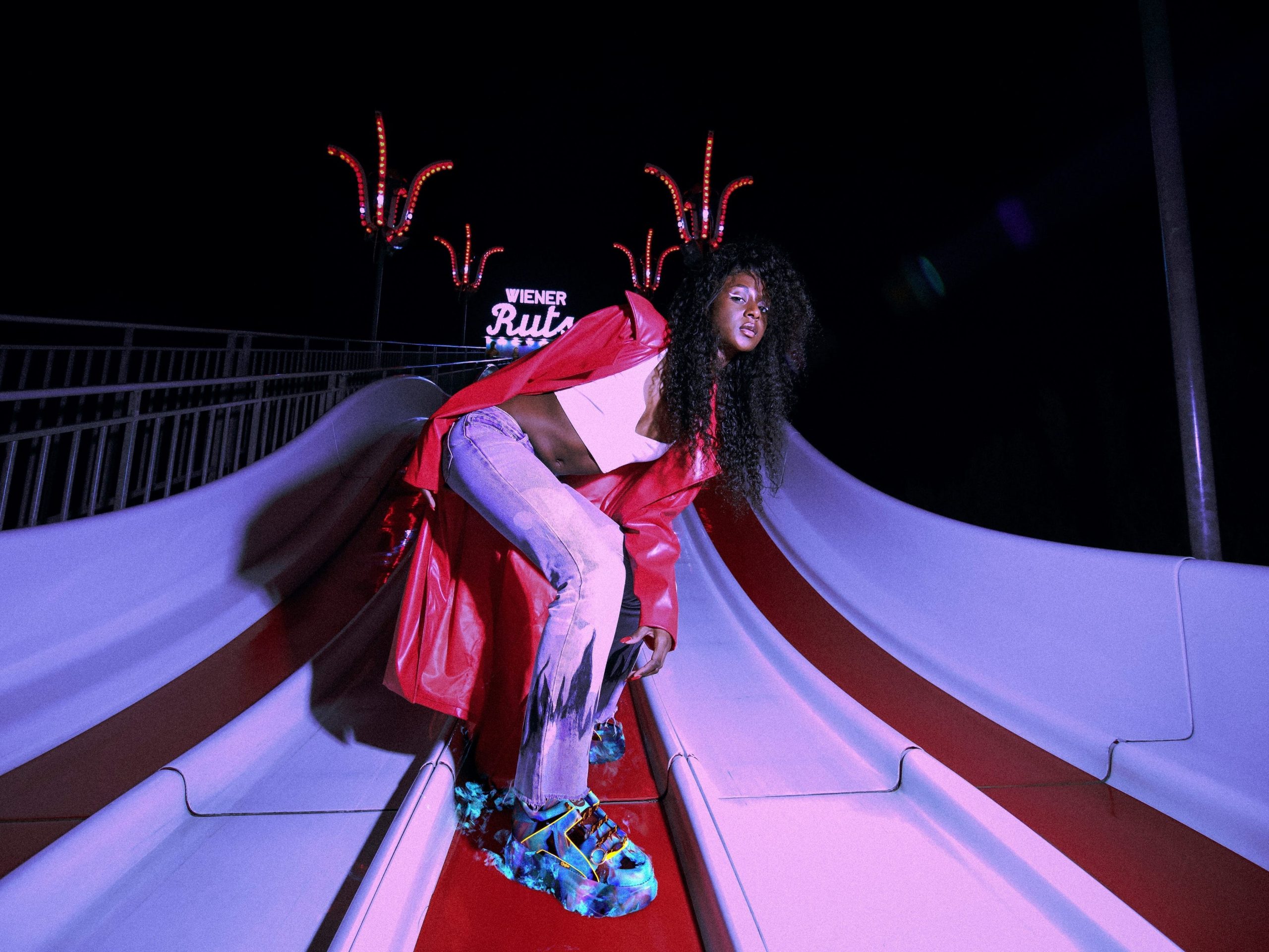
The Fabricant
- Digital fashion companies aim to disrupt and digitize high fashion
- Insider spoke with a representative from The Fabricant, a digital fashion house.
- The Fabricant works with major brands, and some of its designs have sold as NFTs.
- See more stories on Insider's business page.
Before NFTs were netting $69 million at Christie's, The Fabricant was auctioning off a unique NFT at the 2019 Ethereum conference.
The sale of the Iridescence Dress, a digital-only piece of couture, approached $10,000 – a pretty penny for what was then a burgeoning market.
Not all digital-fashion items are NFTs, explains Michaela Larosse, head of communications at The Fabricant, a digital fashion house. But they do have something in common with non-fungible tokens: they only exist in the digital space.
The Iridescence Dress was a collaboration between The Fabricant and CryptoKitties, an early adopter of the NFT boom. CryptoKitties approached the digital fashion house about designing a dress that would be available on the blockchain.
Larosse notes that the selling price of $9,500, "in terms of today's NFT sales doesn't seem like anything, but then it was extraordinary." Forbes called it the "world's first digital-only blockchain clothing."
The digital-fashion space has only grown since that auction in 2019. Not every digital fashion house sells NFTs - many digital designers have garments that you can buy online and get fitted to your photos. One such brand is Tribute, which sells streetwear-esque clothes that only exist online.
Brands like The Fabricant and Tribute market themselves as pro-sustainability and give customers the opportunity to own a digital garment which has been specifically edited onto a photo or video of them.
Because of the lack of physical production, there's no need for factory use, transportation, packaging, or any of the traditionally-polluting practices that have been historically endemic to the fashion industry.
While Tribute's prices rarely top $100, The Fabricant focuses on high-dollar couture. Larosse explains that the company employs classically-trained fashion designers who work in a "digital atelier" to design, drape, and code each garment.
Larosse told Insider that The Fabricant's business is divided into two strands: the fashion house side of the business and the brand partnerships arm, which operates like an agency.
The agency side creates 3-D models of garments for brands like Under Armour, Tommy Hilfiger, and others in order to mitigate the carbon footprint of the typical process of sending garments and samples from headquarters to factories and back.
And legacy brands are also getting into digital fashion. In March, Gucci partnered with fashion and technology company Wanna to sell digital versions of the brand's sneakers for $12, according to Business of Fashion.

Buffalo London x The Fabricant
Similarly, The Fabricant partnered with shoe brand Buffalo Londo to make a digital-only version of the brand's signature sneakers, emblazoned with flames. Customers can appear in the shoes, but only in the digital space.
The agency side has also dabbled in NFTs; a recent partnership with model and entrepreneur Karlie Kloss' Kode With Klossy initiative involved a blockchain competition and auction for young creators' takes on a digital jacket.
While the market size for digital fashion is difficult to define, The Fabricant has high hopes for the future of the business, including designing outfits, similar to video game "skins," that can be used in the multiverse.
"The idea that you can non-physically dress yourself is quite a challenging concept" for people who aren't in this space, Larosse explained. But with many influencers and online personalities marketing physical clothing on digital platforms like Instagram, Snapchat, and TikTok, perhaps digital fashion isn't far behind.
